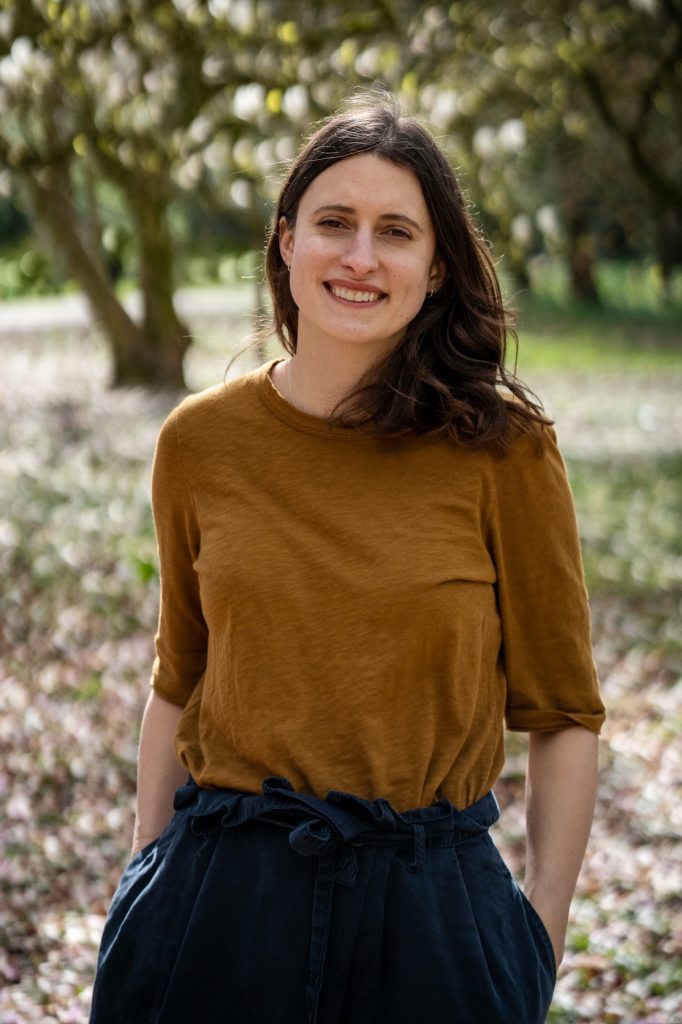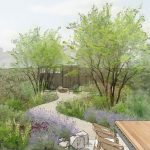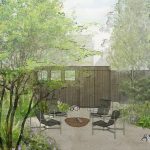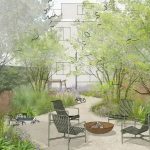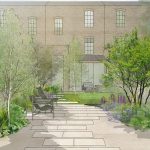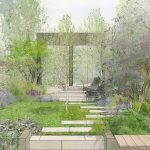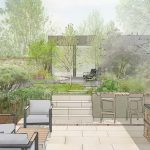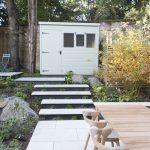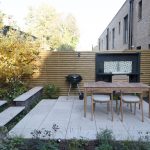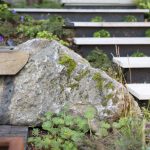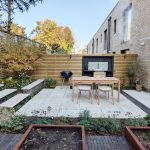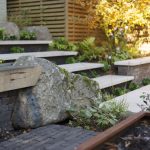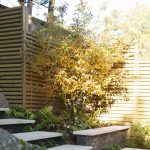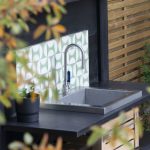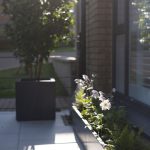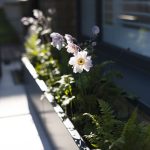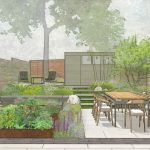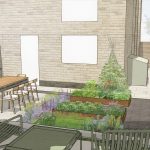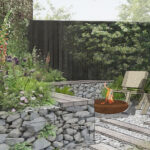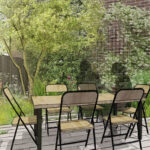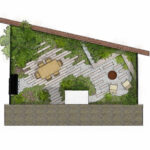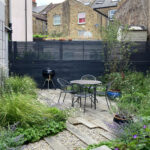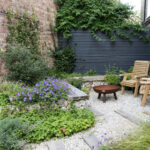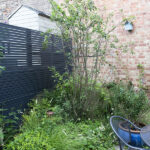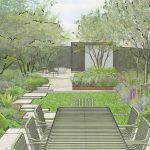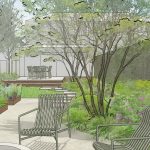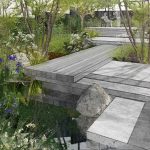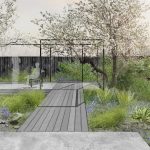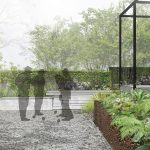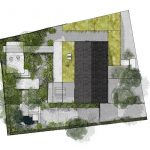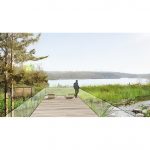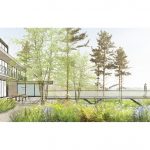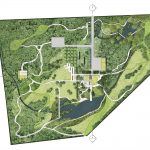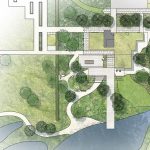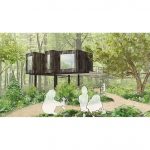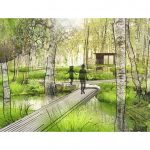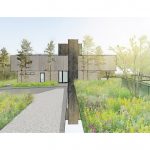Helen Saunders
Helen designs nurturing sanctuary spaces inspired by nature, where people and wildlife can thrive. Her gardens are places to relax, entertain and play – to unwind and enjoy outdoor living. She loves working closely with her clients to discover their wants and needs, to create a space which is truly personal to them.
With a background in Fine Art, she brings a deep understanding of colour and composition to her designs. Atmospheric planting schemes captivate the senses using colour, texture and scent, and creative use of materials elevate each garden to make it unique. Her gardens are always strongly connected to their context, using materials and planting which are sensitive to their surroundings and draw out the character of that place.
Her planting schemes are designed to provide interest throughout the year with a display of colour, texture, blossom and berries revealing the beauty of the changing seasons. Biodiversity is at the heart of each scheme, with planting chosen to provide food for wildlife as well as habitat space.
Instagram: @helensaunders_gardendesign
Biography:
Following a master’s degree in fine art, Helen worked for several years as an artist creating photographic landscapes. She then entered the design world, working alongside architects to produce visualisations, before retraining as a garden designer, graduating with a distinction. She was nominated as a finalist for her final student project at the Society of Garden Designers Awards in 2020 and went on to win an award in 2021. Since graduating she has designed a wide range of gardens from small urban plots to large rural landscapes and has gained experience working for some of the country’s top garden designers. She now runs her own practice, based in Surrey.
This garden combines a mediterranean landscape type with a sanctuary feel, with open sunny areas, and a shady seating area cocooned by trees. The conditions of the site – nearly South-facing and within the London micro-climate lends itself to this kind of planting.
Keeping it sustainable
The design incorporates the existing concrete on site to be re- used as planting substrate to provide the free-draining conditions that herbs such as Lavender and Rosemary enjoy. This also has the added benefit of reducing the waste produced from the build and therefore the carbon footprint.
Existing rockery stones have been re-used in the scheme to add to the rocky mediterranean feel and are combined with sandstone paving at the beginning and end of the garden. These provide a ‘landing pad’ before entering the shed or the terrace. A winding gravel path creates an exploratory route down the garden, leading to the seating area and shed. New trees have been added to provide privacy and a sense of seclusion. In addition to this, woven hazel screening has been added to the lower fencing on the left, providing an extra layer of privacy. This texture also has a slightly ‘kitchen garden’ feel which works well with the edible herb planting. All the fencing is cloaked in climbers which add to the feeling of being immersed in greenery.
Improving biodiversity
The design is also driven by a desire to improve habitat potential for wildlife. By creating areas of different landscape types, the garden will become a mosaic of habitats – dry/Mediterranean, woodland, and water providing the structural complexity and elements that different creatures need to thrive. The mediterranean plants chosen are pollinator-friendly, and the ornamental grasses provide plenty of cover, edible seed and nesting material for birds. The garden is designed to provide interest all year round, with flower colour and scent in the summer months falling away to texture, berries and seedheads in the winter months.
A garden to captivate the senses where Birch trees are mingled with low-growing conifers – evocative of the forests of Northern Europe. The naturalistic planting is a sensory exploration with colourful perennials mingling with soft grasses, and edibles amongst scented herbs– perfect for little ones to explore.
A stepping stone path winds through a clover lawn, leading you to a seating area surrounded by trees – an area to relax in the shade. This area expands into a wider gravel area, providing more space for play and entertaining guests.
The concept for this design was sparked by the existing woodland bank. The idea was to really make a feature of it, incorporating floating steps that intersect with boulders, giving the impression of natural and manmade harmoniously combined.
Lush, green planting and a new multi-stem tree build on the woodland feel and add to the sense of seclusion, as well as connecting to the view beyond. A terrace situated on the bank provides a destination to sit and look over the garden and feel immersed within nature.
The lower level is zoned into separate ‘rooms’ for stylish outdoor living, with space for cooking and dining. Raised beds are positioned close by to allow for herbs and greens to be picked fresh for cooking.
Colourful planting surrounds the dining terrace and provides separation between the two areas as well as offering scent and seasonal interest.
This garden design was a collaboration with Joana Rzepa. The brief for this small courtyard garden was to create a space which was both welcoming to wildlife and an entertainment/relaxation space for the client. We divided the space into two main zones, a cooking/dining area, and a more casual fire pit space.
The space had a slightly industrial feel which we wanted to build on using materials which had a weathered patina, such as the oak sleepers and steel mesh for the climbers. We also used plants that would creep between spaces and give a slightly wild feel. Trees and plants were chosen which provided nectar-rich flowers and berries both for year-round interest and to attract wildlife.
The design for this garden was based around the concept of ‘The Secret Garden’. Although there is no wall or gate, the garden is designed to feel very secluded, cocooned by trees. A playful sense of discovery is also key with stepping stone route linking separate areas and planting weaving through the hardscape, creating an immersive green oasis.
Trees provide privacy with evergreen single stems providing much-needed screening on one side. This more formal repetition contrasts with the more randomly spaced multi-stem trees which culminate in a ‘glade’ at the bottom of the garden. Here the trees surround a fire pit, providing dappled shade on a sunny afternoon and a secluded spot to spend the evening by the fire.
The planting has a natural feel with Cow Parsley, ferns and grasses combined with colourful geraniums. A trio of low clipped yew domes provide structure, and contrast to the soft, naturalistic texture of the rest of the border. Multi-stem trees provide year-round interest with blossom in Spring, and berries for insects and birds in the Autumn.
This design blurs the boundaries with the local woodland landscape, using naturalistic planting, with a series of overlapping platforms, which appear to ‘float’ above the planting. The garden also takes inspiration from the local chalk rivers typical of the Chilterns, incorporating a dry river bed which helps to absorb rainwater and prevent runoff. A natural pool at the bottom of the slope, is fed by rainwater from the roof, and is a tranquil spot, as well as being beneficial for wildlife.
The brief called for screened spaces to dine and entertain, whilst enjoying the view. A cantilever deck allows dining close to the house, and within the greenery. A platform at the top of the garden provides a space to enjoy the afternoon sun.
A foraging element – The woodland edge planting incorporates fruit and vegetables through apple trees, and fruit bushes, as well as vegetables throughout the planting, which are both ornamental and edible.
This site is part of the National Forest, and was planted with a native mix of trees about ten years ago. The clients invite school groups in to learn about the woodland and local wildlife, and wanted to expand on this by building an educational base on site. They wanted a garden where they could enjoy entertaining and growing their own food, as well as have some screening from the educational zones.
The design links with the architecture, but also responds to the local landscape. The channelling and capture of existing water on site, is the basis of the design, forming a series of pools, which links with the view of the reservoir. Much of the woodland is retained, while areas of meadow and wetland, provide a mosaic of different habitats, and destinations around the garden.
The education base is a tree house, giving the kids a new perspective amongst the canopies. Woodland glades will provide spaces where they can collect natural materials to build dens and habitat piles, as well as cook the food they have grown in their own productive garden.
